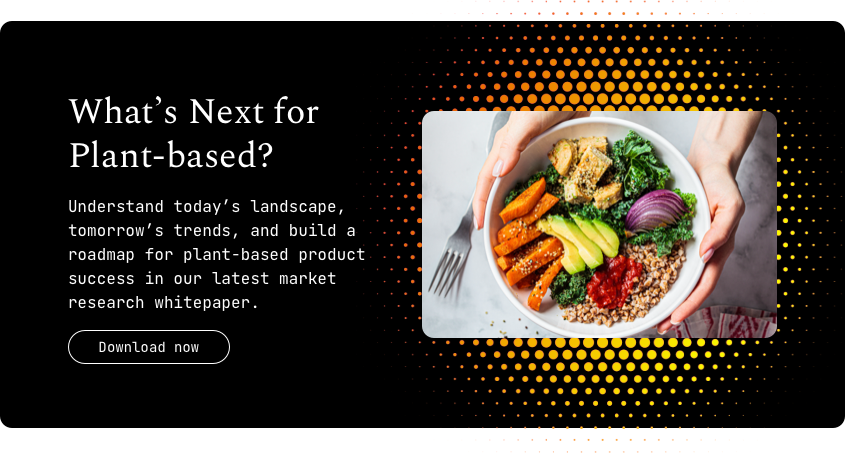Where will the journey lead?
What will the future of qualitative market research look like? Which trends are emerging? Which changes will be long-lasting? To answer this question, Lukas Sternberg from PRS IN VIVO takes a look at the past year.
[After two years of pandemic, we also ask ourselves at PRS IN VIVO: Where is the journey with our qualitative research going and how will qualitative research be carried out in the future?]
For many of us, Covid has undoubtedly played a key role in shaping how we spend our leisure time, how we work and how we work with brands as consumers. For many people, the centre of life has at least temporarily shifted completely into their own four walls: between home office, the constant balancing act between childcare and work because of school and day-care closures, and limited leisure time and shopping opportunities- it should come as no surprise that virtual spaces and means of communication have taken up an (even more central) role in the organization of our lives across almost all age groups.
Professional meetings as well as private gatherings were and are organized via video calls, social media is increasingly serving as an inspiration and communication platform, and last but not least, the market share of online shopping continues to grow. For example, Amazon is temporarily experiencing an almost explosive growth, and online supermarkets (e.g., Rewe, Bringmeister, picnic), food delivery services (Lieferando and Co.), as well as quick-commerce start-ups (Gorillas, Flink, Knuspr and Getir), have firmly reached the consciousness of many consumers.
Temporary restrictions in 2022 as well
After two years of pandemic, we are also asking ourselves at PRS IN VIVO: Where is the journey with our qualitative research going? And how will qualitative research be carried out in the future? In the course of the pandemic, local lockdowns have often made in-situ research impossible, for example at consumers’ homes, in shops, in companies, or in the workplace. In many cases, qualitative online studies on communication platforms, social media and communities served as a plan B in order to be able to generate any insights from qualitative research at all. And although the most recent successes in vaccine development and improved hygiene concepts are grounds for optimism, we expect that temporary restrictions or precautionary measures through increased hygiene awareness in society will present us with the challenge of finding flexible solutions and methodological approaches in 2022 as well.
Online qualitative research as a consequence of change
However, online qualitative research has not only become a necessary alternative to traditional F2F approaches but is also a logical consequence of change. If our study participants’ lifestyles and consumer behaviour are increasingly geared towards digital offerings, doesn’t it make sense to follow them there? Are we at times not closer to the consumer with online qualitative research, when digital interfaces are the more natural platform for generating shopper and consumer insights in their respective context?
We find that the true evolution of online qualitative research over the last two years is not necessarily the further evolution of our data collection tools, but rather the paradigm shift or the changing view of our customers and the entire industry on existing online-based methodological approaches.
But doesn’t online data collection dilute the observational element of our studies?
At PRS IN VIVO, we have always paid special attention to behavioural observation in our studies. Most of our thought processes and perceptions are controlled by subconscious (System 1) processes, which cannot always be communicated objectively by consumers or understood at all. So what if we are interested not only in what consumers say, but also in what they do? Justifiably, we need to ask ourselves how qualitative online research can incorporate our behavioural science approaches and the differentiation between system 1 and system 2. In fact, online research is not necessarily a compromise on behavioural observations and ethnography, but, depending on the focus of the study, can add real value.
An open window – online insights into consumer lifestyles without bias
Not only Gen Z, but also millennials and generations beyond are now used to capturing and sharing feelings, impressions and emotions through images and videos. New online tools, such as vlogs and video communities, enable us to consciously imitate the user experience of a social media app and thus capture stories, snapshots, and impressions from the lives of consumers live and in a natural way. As a side effect, moderators become supporting actors instead of actors – study participants direct and become storytellers instead of respondents. And as we know, minimal presence and influence on the in the moment experience means a reduction in bias. This is all the more relevant when it comes to private product experience in the Second Moment of Truth or personal shopper journeys on websites and apps
Screen recording as a basis for in-depth interviews
In the case of in-home product tests, we have the opportunity to quantitatively record and log consumption occasions in addition to self-documentation by study participants via supplied smart labels. Online shopping journeys can be observed naturally via screen recording on both smartphone apps and desktop sites, providing the basis for a subsequent in-depth interview.
And how could you better explore the user experience of a make-up product innovation with the TikTok generation than with autoethnographic product tests in the form of TikToks and Instagram Stories? When influencers and Gen Z consumers naturally turn to social media to share their impressions of a new product with their friends and acquaintances, should we not then give them the opportunity, as study participants, to use their natural language and thus gain knowledge about new trends at the same time?
So far, yet so close: why our customers also benefit from online qualitative research
Traditionally, planning field visits of Face-2-Face focus groups, co-creation workshops and ethnographies is often reserved for a limited group of people. The travel costs, the logistical effort, and, last but not least, the high time investment over several days, are too high. With online platforms, these barriers automatically disappear, so that “newcomers to market research" can also immerse themselves in the world of their consumers.
Be it with online communities, online focus groups or digital video diaries – we have made great experiences with enabling active participation of stakeholders from different areas such as category management, Marketing, R&D and of course Consumer Insights in our studies. However, the most notable impact we have felt over the last 24 months is not merely an increased interest from stakeholders in actively pursuing studies. The way online research is changing the engagement of observers is also reflected in the generation of insights themselves.
Online research enables our customer companies to be closer to consumers despite the distance and to temporarily assume the role of market researchers themselves. Via digital platforms, we are able to conduct dynamic discussions without artificial interruptions, in that moderators can respond live to “invisible" questions and comments from the digital observation room. Spontaneous observations in particular inspire experts from product development, as well as brand management, to take on completely new perspectives, which results in completely new, unexpected questions. As a result, we generate strong insights in cooperation with customer teams that directly address the needs of specific stakeholders and incorporate co-creation elements into online interviews and communities.
The journey of online qualitative market research continues
After the pandemic has inevitably transformed online qualitative market research from a necessary alternative to a respected and correct methodology, it will establish itself even more on both the institution side and the customer side for the above reasons. In doing so, online qualitative market research will less replace F2F approaches, but will rather complement and expand the tool kit of market researchers depending on the question. The increased interest in our online solutions (partly due to the pandemic) will also result in the further development of methodologies and tools that will enable even more detailed insights into the lives of target groups in the future.
Behaviour First and See Through™ with Our Human Advantage.





